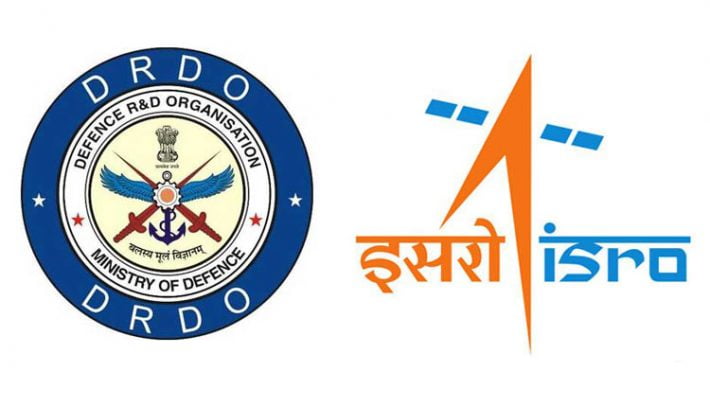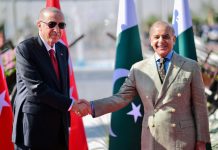Unlike India’s space agency, ISRO, lack of funds and bureaucratic entanglements have seriously hampered the quality output of the Defence Research and Development Organisation, former DRDO scientist Ravi Gupta claims.
Japan, Vietnam PM’ Meet In Hanoi; Vow To Collaborate On South China Sea
Speaking to EurAsian Times, Gupta said the premier research institution has conducted a record number of missile tests in the last few months. However, the lack of autonomy and the latitude to make its own decisions has impacted many of its projects.
Between September 7 and October 19, DRDO had conducted at least 12 missile tests or systems for missiles of various ranges and purposes, raising speculations that the country was gearing up to the challenge posed by China at the Ladakh border. On December 16, the organization successfully test-fired two nuclear-capable Prithvi II missiles, capable of carrying 500-1000 kg payload up to a range of 350 km.
However, Gupta dismissed the media reports that claimed the tests were conducted as a result of the country’s tensions with China in Ladakh.
“In fact, the tests have been on hold since March 2020 because of the lockdown, although the research was going on in the laboratories where the developmental work was happening. But the testing activities cannot be done sitting at home, so all the weapons tests scheduled from March onwards took place since September when the threat of the Covid-19 lessened,” he said.
#FirstVisual of Prithvi #missile night trial from ITR off #Odisha coast. #India test fires 2 variants of #Prithvi in quick succession to reconfirm operational readiness. Developed by @DRDO_India, the tactical #nuclear capable weapons can strike targets at a range up to 350 km. pic.twitter.com/GMktJ8ePFA
— Hemant Kumar Rout (@TheHemantRout) December 17, 2020
The situation was similar with ISRO (Indian Space Research Organisation) where all the tests had to be postponed, he said, adding all the launch campaigns had to be halted because of the pandemic.
On the crucial Prithvi II missile test, Gupta said it is a misconception that it was a developmental test conducted by DRDO. He said the Prithvi II has already been inducted by the Strategic Force Command of the Army, and that these were user-based tests which are done periodically to collect additional information about the weapons and do feasibility assessments.
The year 2020 has been an eventful one for DRDO. It has been successful in almost all the tests conducted this year, Gupta, who served as Director of Public Interface at DRDO, said.

So, what were the challenges the country’s foremost defense research organization faced all these decades? Mostly the bureaucratic control and the lack of autonomy in decision-making, Gupta recalled. On the other hand, ISRO has been lucky to have been granted complete autonomy since the beginning, he maintained.
“ISRO works according to its own rules, service conditions, manpower allocation, and even in promotions, and they enjoy enormous latitude in the policy directions in India’s space endeavors. They themselves decide what to do with the funds they receive from the government and which research areas to focus on, unlike DRDO where every decision happens with the consent of the defense ministry, and sometimes, the finance ministry,” he said.
Gupta said an independent organization like the ISRO can take a decision on a project in less than a month, while it may take years for DRDO to cut through the bureaucratic hurdles and get a sanction on its projects, which severely hampers the quality output.
“Somehow, we kept on working, developing, and learning. The initial phase was kind of a learning phase, then came the phase of actively developing the systems, and at the same time trying to meet all these challenges of the bureaucracy and all. From 2005, the phase of faster deliveries started. In 1988, Prithvi was first test-fired, then it took a long time for the military to convince the armed forces about its accuracy and all, and finally, around 1996-97 it was inducted,
“Soon after that, Agni-II was also inducted. Then, similarly, many other systems found their way to the country’s armed forces. By the time we had a complete grip over the technologies, which we continued to increase further, as a result, the last 15 years have been a phase of very-very rapid delivery, the pace has been increasing consistently. The last two years (2019-20) have been a period of increased deliveries,” he added.
On Modi government’s focus on ‘Atmanirbhar Bharat’, which focuses on home-grown technologies, the former DRDO scientist said India does not have to import anything.
“Today, we are nearly self-sufficient. There are a few aspects here and there where we lack some capabilities not because we were incapable of producing them, but because the funding was very meager.
“For example, for testing an aircraft engine you need a flying test-bed. India doesn’t have it. Not that it’s a very difficult technology to have a flying test-bed, but it requires money. You have to have dedicated aircraft, which has got at least three engines, preferably four engines. We have to take it to Russia, pay huge money, and keep on waiting in the queue. That is the reason the development of the engine has been very-very slow.”
Experts have lamented the fact that research and development in India’s defense sector get inadequate funding from the government.
“If you look at the world, they have been spending almost hundreds of times more money. After all, scientists cannot do magic and produce something out of thin air. These are very expensive facilities which were not provided. If we talk about missiles, we are completely self-sufficient, even gun development has been sufficient, whether it’s 155mm or whatever, we are completely self-sufficient,” Gupta claimed.
He said DRDO produced the Indian field gun 105 mm way back in the 1960s and 70s. “In fact, in the early 70s the production had started and that gun is still in use, and considered one of the best guns in the world. There was no need to import foreign guns such as the Bofors when the domestic guns were good enough. Such imports were done for kickbacks and greed, nothing else,” he adds.
Under the existing rules, DRDO cannot take up any major system-oriented project unless there is a requirement given by the services.
“Today Astra is one of the best air-to-air missiles in the world. If you consider the capabilities of Astra, they are almost second to none. The only thing is that the material which has been purchased will slightly come from here and there because it’s using a Solid Fuel Ducted Ramjet (SFDR), and that we have also developed now,” he said.
Astra is an indigenously developed Beyond Visual Range (BVR) air-to-air missile, designed to be mounted on a fighter aircraft and is also designed to engage and destroy highly maneuvering supersonic aircraft.
Gupta said that the country is excelling in defense innovations, but the problem is that the rules and regulations are so crafted by the bureaucracy that the development does not take place, and we end up importing whatever their specified requirements are.
“There have been conspiracies to shutdown our capabilities, destroy our capabilities, as happened with HAL and other government organizations,” he said describing the attempts to discredit public-sector organizations by many groups.
Follow EurAsian Times on Google News




